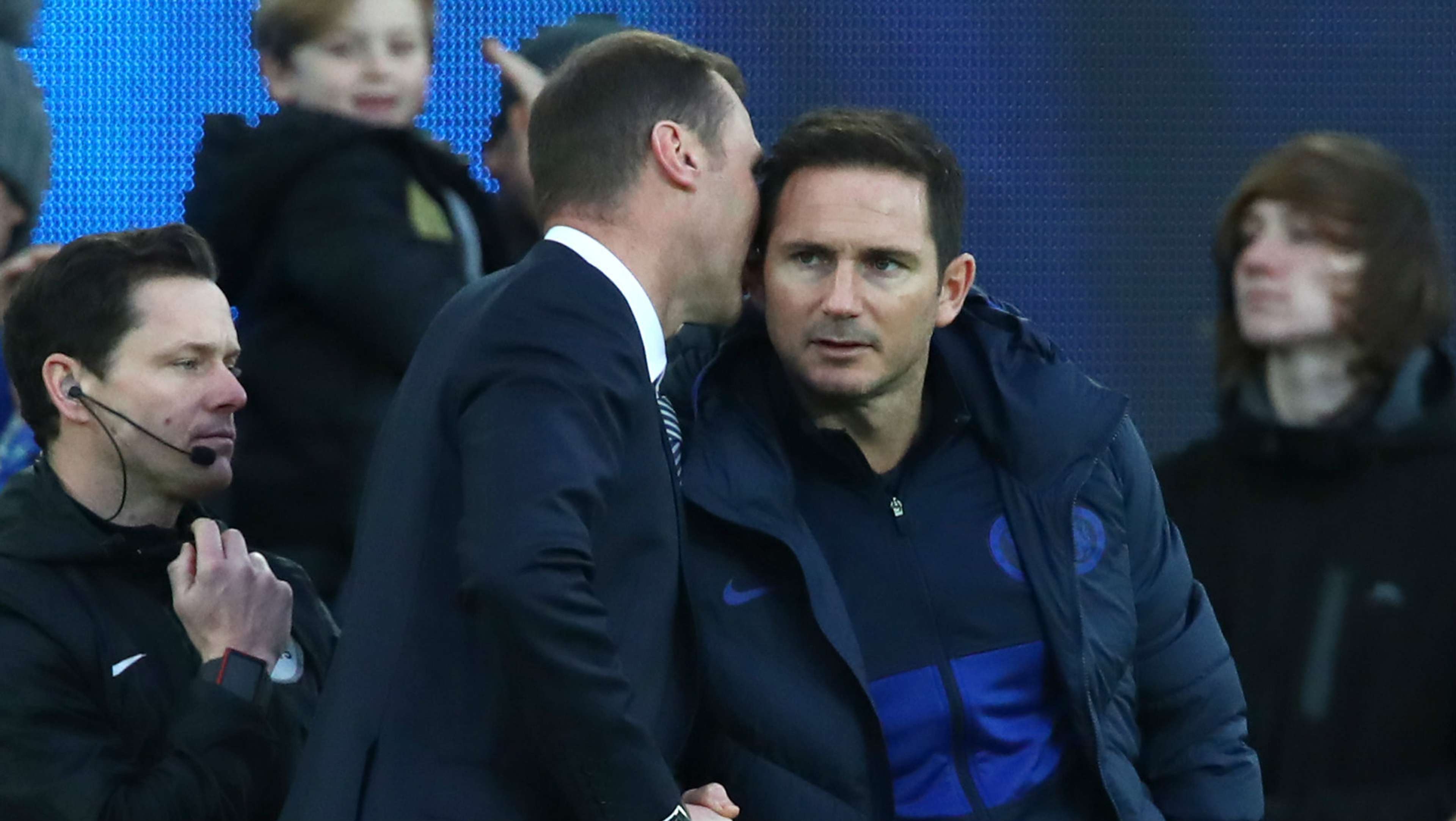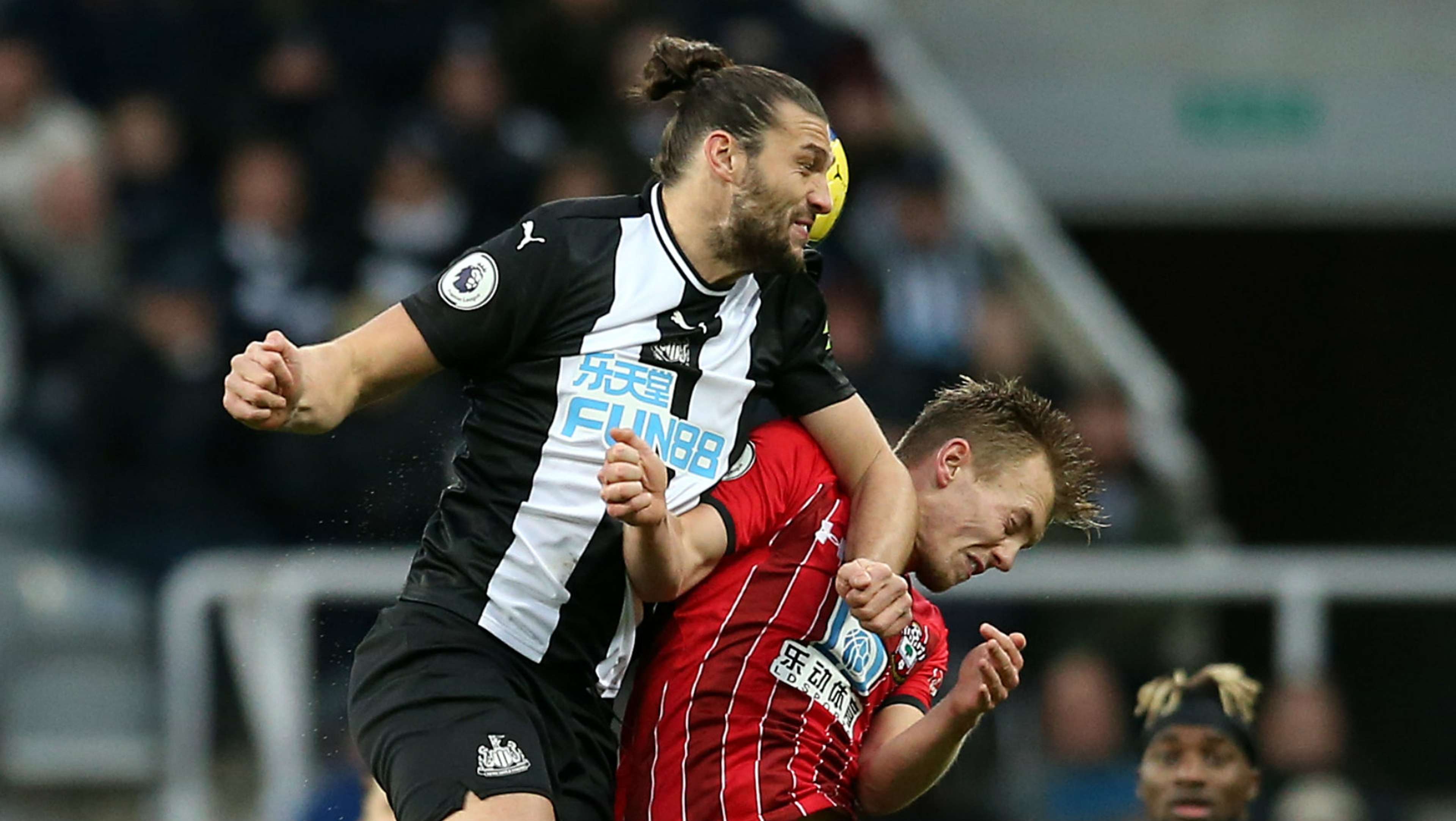The problems being faced by Pep Guardiola at Manchester City were exposed yet again as Manchester United's approach secured Ole Gunnar Solskjaer an important derby win.
Elsewhere in the Premier League, Tottenham delivered their most Jose Mourinho-esque performance to date, Duncan Ferguson was quick to make an impact at Everton and Leicester continued their winning run.
Goal breaks down how the key coaching decisions impacted the weekend's action...
1) United’s rampant front four expose City’s multitude of transitional problems
For the majority of the second half at the Etihad Stadium, Manchester United’s low block simply absorbed the City pressure, highlighting the individual and collective defensive strength of Ole Gunnar Solskjaer’s side as Harry Maguire and Aaron Wan-Bissaka kept Gabriel Jesus and Raheem Sterling quiet respectively.
As we have highlighted before in this column, City struggle to break down deep-lying defences this season because they lack full-back width to stretch the play and miss Leroy Sane’s clever runs in behind.
But much of the post-match analysis has ignored just how dominant United were in the first half, where this game was won.
In a repeat of their performance against Tottenham, Fred and Jesse Lingard in particular were outstanding, crisply exchanging passes and weaving through the first wave of the press to counterattack a soft City centre; Rodri simply cannot screen like Fernandinho.
City’s full-backs also made it easier for United. Kyle Walker is being sat in midfield to try to shore up this zone, which left Marcus Rashford with acres of space on the left flank to drive United forward and run the game, while Angelino was constantly caught ahead of the ball.
In short, City often had just three slow players back when four or five United bodies streamed forward.
2) Long diagonals & quick counters destroy fanned-out Burnley
Tottenham’s performance on Saturday was defined by patience in possession punctuated by long diagonal balls that stretched the opposition and suddenly switched the tempo to release a rapid front four into space.
It was, with the help of a dreadful Burnley display, the most Mourinho-like Tottenham have been since their managerial change.
Sean Dyche will be very disappointed with his team’s tactical setup. From the very first whistle, Burnley’s 4-4-2 was stretched across the length of the pitch, their three lines covering as much as 70 yards to open up massive amounts of space for Dele Alli, Harry Kane, and Heung-min Son – all of whom took advantage of the inexplicable gaps by dropping off the front line.
Burnley’s flat formation means that decompression between the lines is particularly self-defeating, since it only took one dribble to break past four players a time.
Moussa Sissoko was the best at this, driving forward to give Lucas Moura and the other three forwards time and space to make runs into the opposition half.
 Getty
Getty
But take nothing away from a brilliant Spurs performance. They hit dozens of raking long balls out to Serge Aurier to move quickly into the final third, but only after long, dry periods of possession that lulled the visitors.
It was calm and steady, with long balls in key moments putting Son, Alli, Lucas, and Kane through. In other words, classic Mourinho.
3) Ferguson's Atletico-like aggressive 4-4-2 suffocates Chelsea's midfield
When the line-ups were released at Goodison Park it looked as though interim Everton manager Duncan Ferguson was drawing on the Freddie Ljungberg playbook of ultra-attacking tactics, but instead what we saw was Diego Simeone-esque aggressive counterattacking football.
Everton largely sat off Chelsea, but diligently held a midblock in a narrow and ruthlessly compressed 4-4-2 formation that aimed to crowd out the No.10 space and snap into tackles at every opportunity.
The Toffees left the centre-backs alone and held their nerve, only to engage a press whenever the ball entered their half or reached the full-backs, making 37 tackles in total – their joint highest in the Premier League this decade.
With Everton’s midfield four sat roughly five yards inside their own half, they blocked any path to N’Golo Kante, Mason Mount, or either inverted winger, leaving Mateo Kovacic to hold aimless possession in front of the blue wall.
 Getty Images
Getty Images
Things improved marginally in the second half after Frank Lampard seemingly instructed Mount and Kante to come shorter in search of the ball, helping Chelsea to work through the middle, and he also told the centre-backs to play longer diagonals into Willian and Christian Pulisic as they pulled wider than in the first half.
And, as Morgan Schneiderlin began to get repeatedly turned, the Toffees dropped deeper, opening up the No.10 space they had previously shut down. However, ultimately their hard work kept the visitors at bay.
Going forward, Everton’s counterattacks took advantage of Chelsea’s infamous problems defending in transitions through the centre. Richarlison dropped off the front line into space unseen by Kovacic, linking to create the opener, while the second and third goals came from winning the ball high – rich reward for their constant tenacity all over the park.
4) Rodgers’ diamond 4-4-2 the perfect way to hurt high-line Villa
Kelechi Iheanacho came off the bench to score the winning goal for Leicester City against Everton a week ago, but having not featured in the 2-0 home win over Watford in midweek, nobody expected Brendan Rodgers to start him at Aston Villa, let alone in an unfamiliar diamond 4-4-2 formation.
The manager was rewarded for his proactive thinking, though, selecting just the right system to exploit Villa’s weaknesses despite Leicester having previously won seven on the bounce in a 4-2-3-1.
Villa play with a very high defensive line and their full-backs regularly overlap, leaving them far too open to quick counterattacks. On Sunday, Jamie Vardy and Iheanacho constantly made runs between Villa’s back two, and it was alarming to see how often the hosts were left two on two in their own half.
In order to create these chances, Leicester’s diamond midfield outnumbered Villa’s, nullifying the threat of John McGinn and Jack Grealish.
Things could have been very different, though, had Anwar El Ghazi scored a sitter at 0-0. That chance – and several others in the first half – came from Leicester’s shape leaving too much room on the flanks. El Ghazi and Ahmed Elmohamady ran through Youri Tielemans too easily at times, although ultimately Rodgers was right to gamble on the assumption the diamond 4-4-2 brought more strengths than weaknesses.
5) Carroll’s introduction showcases the success of Bruce’s tactical simplicity
Newcastle were sluggish in the first half at St James’ Park, caught out several times by simple Southampton counterattacks that should have put the visitors up by more than a goal by the break. But the game turned on its head when Steve Bruce brought Andy Carroll on for the final half-hour, showing how sometimes football’s simplest – and oldest – tricks can still bring results.

Carroll’s cross for Jonjo Shelvey’s equaliser is the most obvious of the striker’s contributions, but this was more about the indirect impact of having a target man up front to terrify the opposition.
Newcastle immediately started hurling long balls forward for ‘Big Andy’, as Bruce calls him, which inevitably forced Southampton deeper and deeper. Every centre-back is scared of Carroll’s head.
The crowd were suddenly on their feet whenever Newcastle won a set-piece, which may help to explain why Shelvey was able to tower so brilliantly above his marker to score, while Southampton’s deepening defensive line ultimately led to the winner.
Sean Longstaff had a full 10 yards of space to line up his shot, from which Federico Fernandez scored the rebound, precisely because Saints had retreated in on themselves with Carroll lurking at the back post.
